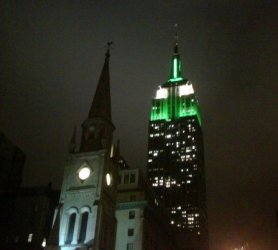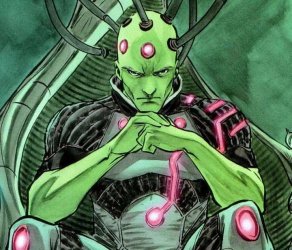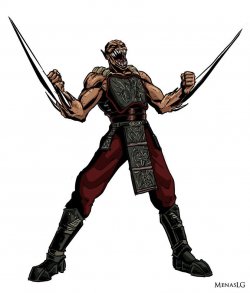- Sep 22, 2013
- 4,956
- 250
- 85
The esoteric but symbolically-loaded term 'leviathan' is a metaphysics concept referring to a giant mysterious sea-beast signifying chaos and pure uncertainty. Leviathan has been characterized as everything from a misshapen giant squid to an underwater dragon to a multi-headed poisonous eel (basically anything that would stir thoughts about 'deformity' or uncontrolled 'vitality').
Theologians have used the term leviathan (obviously) but so have philosophers such as Thomas Hobbes seeking to discuss political 'structuralism' in terms of the uncertainty/unpredictability of 'dynamic deformity' (or 'undesirable revolution').
The modern world is marked by great networking 'labyrinths' and technological sophistication and electromechanical 'grids' (i.e., computer-networks). In this 'sea' of connected 'parts,' we might imagine that perturbations or unwanted 'misshapen static/interference' (e.g., computer-viruses) might simply 'pop-up' (spontaneously and unpredictably!). That's why modernism philosophers often study 'network theory' (to evaluate the 'parameters' of reliable structures in the modern landscape of 'geometric grids').
In this 'sea' of 'virtual-life,' we might imagine that an Internet-virus is something like a 'leviathan.' That's why we might want to evaluate our species philosophical/intellectual interaction with these modern 'grids' (or labyrinths) --- so as to better 'detect' undesirable leviathans/dragons (such as Internet super-viruses).
====
Since modern cities are bustling with lights, electricity, and industry, we might imagine that our 'modern universe' is something like a 'malleable toy-factory.' There are gears, parts, laborers, designers, and markets. Mathematicians are busy studying predictable patterns in the stock market, for example!

Youngsters love cartoons and fantastic stories/characters symbolizing modernism intrigue. These cartoons and stories present 'avatars' who represent modern intelligence and imagination. The fictional A.I. (Artificial Intelligence) robot Perceptor, for example, is an intelligent scientist who transforms into a high-tech microscope. Perceptor obviously symbolizes 'working with modern machinery' (and 'modern science'). We evaluate Perceptor to better appreciate modern IQ.

The fictional comic book 'super-villain' Brainiac is a semi-organic 'super-mind' being who has strange cyborg-like features and electro-chemical tubes connected to his brain and body, pumping him with both physical and intellectual energy/stimulation. Brainiac obviously symbolizes our conscious 'interaction' with modern machinery and gadgets. He may also be used in stories about man's fears regarding machinery failures or elemental damage/waste.

Let us then propose that a useful model of 'leviathan' is a symbolic boat/ship (symbolizing imagination and intelligence 'development') being 'tangled' by a giant monstrous squid with multiple tentacles. This model (or 'picture') can be referenced for ideas about modern man's 'struggle' with sailing across this sea of machinery with trepidation and anxiety regarding becoming tangled by an 'elemental leviathan' (e.g., Internet super-virus). We'd make such a model, since we're interested in how these 'parts' of a 'modern civilization' are like objects or 'special elements' being 'structured' into a congenial whole (not unlike the structural reliability of chemical bonds).

The very bizarre modernism-symbolic Mortal Kombat video-game avatar/warrior Baraka is an arm-bladed 'ghoul' who symbolizes the use of weaponry. Baraka's deadly blades are infused into his arms (and he also possesses metal teeth!), so he clearly represents man's curiosity about the use of deadly elements or weapons. He's a video-game character, since youngsters are fascinated with the 'logistics' of the frailty of modernism! Baraka arguably challenges us to examine how modernism 'machinery' (and gears) fit together like cartilage and therefore can be unbounded by anarchy or even violence (e.g., 9/11).

Finally, we may examine why we'd construct modernism models of 'leviathan' which can be likened to the chaotic regions of enigmatic particle motion chaos and unpredictability in a black hole (a real phenomenon in the universe caused by an exploding star leading to a 'rip' in the fabric of the universe that seemingly creates an 'entropy vacuum' or 'molecular collision pit'). The contents of a black hole are unknown, but it has been postulated by many well-respected scientists such as renowned physicist Stephen Hawking that a black hole is like a non-Euclidean well. So could 'leviathan' be real and if so could we use it to better understand evolutionary deformities (e.g., organic decay)?
====


Theologians have used the term leviathan (obviously) but so have philosophers such as Thomas Hobbes seeking to discuss political 'structuralism' in terms of the uncertainty/unpredictability of 'dynamic deformity' (or 'undesirable revolution').
The modern world is marked by great networking 'labyrinths' and technological sophistication and electromechanical 'grids' (i.e., computer-networks). In this 'sea' of connected 'parts,' we might imagine that perturbations or unwanted 'misshapen static/interference' (e.g., computer-viruses) might simply 'pop-up' (spontaneously and unpredictably!). That's why modernism philosophers often study 'network theory' (to evaluate the 'parameters' of reliable structures in the modern landscape of 'geometric grids').
In this 'sea' of 'virtual-life,' we might imagine that an Internet-virus is something like a 'leviathan.' That's why we might want to evaluate our species philosophical/intellectual interaction with these modern 'grids' (or labyrinths) --- so as to better 'detect' undesirable leviathans/dragons (such as Internet super-viruses).
====
Since modern cities are bustling with lights, electricity, and industry, we might imagine that our 'modern universe' is something like a 'malleable toy-factory.' There are gears, parts, laborers, designers, and markets. Mathematicians are busy studying predictable patterns in the stock market, for example!

Youngsters love cartoons and fantastic stories/characters symbolizing modernism intrigue. These cartoons and stories present 'avatars' who represent modern intelligence and imagination. The fictional A.I. (Artificial Intelligence) robot Perceptor, for example, is an intelligent scientist who transforms into a high-tech microscope. Perceptor obviously symbolizes 'working with modern machinery' (and 'modern science'). We evaluate Perceptor to better appreciate modern IQ.

The fictional comic book 'super-villain' Brainiac is a semi-organic 'super-mind' being who has strange cyborg-like features and electro-chemical tubes connected to his brain and body, pumping him with both physical and intellectual energy/stimulation. Brainiac obviously symbolizes our conscious 'interaction' with modern machinery and gadgets. He may also be used in stories about man's fears regarding machinery failures or elemental damage/waste.

Let us then propose that a useful model of 'leviathan' is a symbolic boat/ship (symbolizing imagination and intelligence 'development') being 'tangled' by a giant monstrous squid with multiple tentacles. This model (or 'picture') can be referenced for ideas about modern man's 'struggle' with sailing across this sea of machinery with trepidation and anxiety regarding becoming tangled by an 'elemental leviathan' (e.g., Internet super-virus). We'd make such a model, since we're interested in how these 'parts' of a 'modern civilization' are like objects or 'special elements' being 'structured' into a congenial whole (not unlike the structural reliability of chemical bonds).

The very bizarre modernism-symbolic Mortal Kombat video-game avatar/warrior Baraka is an arm-bladed 'ghoul' who symbolizes the use of weaponry. Baraka's deadly blades are infused into his arms (and he also possesses metal teeth!), so he clearly represents man's curiosity about the use of deadly elements or weapons. He's a video-game character, since youngsters are fascinated with the 'logistics' of the frailty of modernism! Baraka arguably challenges us to examine how modernism 'machinery' (and gears) fit together like cartilage and therefore can be unbounded by anarchy or even violence (e.g., 9/11).

Finally, we may examine why we'd construct modernism models of 'leviathan' which can be likened to the chaotic regions of enigmatic particle motion chaos and unpredictability in a black hole (a real phenomenon in the universe caused by an exploding star leading to a 'rip' in the fabric of the universe that seemingly creates an 'entropy vacuum' or 'molecular collision pit'). The contents of a black hole are unknown, but it has been postulated by many well-respected scientists such as renowned physicist Stephen Hawking that a black hole is like a non-Euclidean well. So could 'leviathan' be real and if so could we use it to better understand evolutionary deformities (e.g., organic decay)?
====

